Premier Water Treatment System Water Filtration For The Whole House, commercial

Premier Water Treatment System Water Filtration For The Whole House, commercial
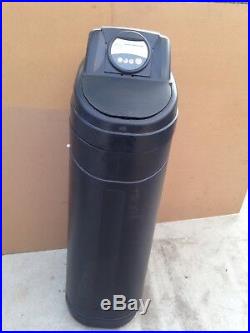
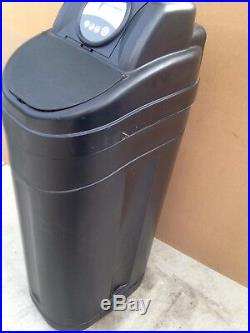
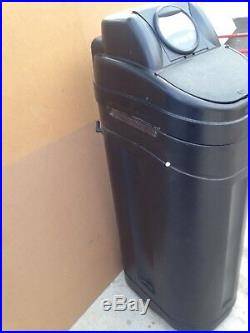
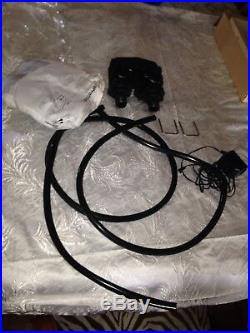
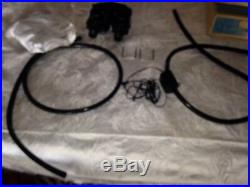
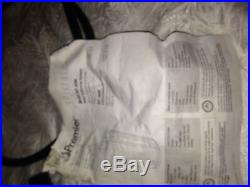
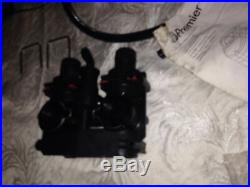
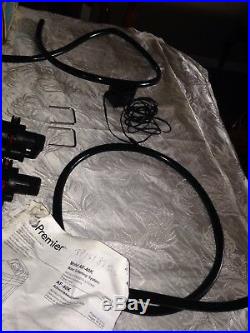

This water treatment was new, but was left in the sun and was not installed for a year, so it might have discoloration, but still not installed yet, have all the parts pictured, please look for all the pieces that comes with it, as pictured, this is what you’ll get. PARAMETERSThese water softener systems have been tested by WQA and conform to NSF/ANSI 44 for specific performance claims as verified and substantiated by test data. The rated salt efficiency’s below were also determined in accordance with NSF/ANSI 44 and are only valid at the salt dosage referenced below. An efficiency rated water softener is a demand initiated regeneration (DIR) softener which also complies with specific performance specifications intended to minimize the amount of regenerant brine and water used in its operation. The rated efficiency of the water softener, the salt dosage at that efficiency, the capacity at that salt dosage and that of the efficiency is only valid at the stated salt dosage. Efficiency is measured by a laboratory test described in NSF/ANSI 44. The test represents the maximum possible efficiency the system can achieve. Operational efficiency is the actual efficiency achieved after the system has been installed. It is typically less than the efficiency due to individual application factors including water hardness, water usage, and other contaminants that reduce the water softeners capacity. Caution – These systems are not intended to be used for treating water that is micro-biologically unsafe or of unknown quality without adequate disinfection before or after the system. Refer to the Installation and Service for Set-Up and Programming Instructions. Contact your local Premier dealer for parts and service. Note – Important Notice: For conditions of use, health claims certified by the California Department of Public Health and replacement parts, see product data sheet. Rated Service Flow (GPM). Pressure Drop at Rated Service Flow Rate (PSID). Max Flow Rate During Regeneration (GPM). Rapid Rinse/purge – GPM. All Systems above tested at 35 psi +/- 5 psi, pH of 7.5 +/- 0.5, Capacity Testing Flow Rate = 50% of the rated service flow rate for the various size systems. SYSTEM RECHARGE CYCLES (9-CYCLE OPERATION)Service (Down-Flow) – Untreated water is directed down through the resin bed and up through the riser tube. The hardness ions attach themselves to the resin and are removed from the water. The water is conditioned as it passes through the resin bed. Brine Refill – Water is directed to the salt tank at a controlled rate, to create brine for the next recharge. Brine Prep (Dissolve Salt) – After the refill cycle fills the salt tank with water, this cycle allows time for the salt to dissolve into the water. Backwash 1 (Up-Flow) – The flow of water is reversed by the control valve and directed down the riser tube and up through the resin bed. During the backwash cycle, the bed is expanded and debris is flushed to the drain. Brine Draw (Down-Flow) – The brine draw cycle takes place during the slow rinse cycle. The control directs water through the brine injector and brine is drawn from the salt tank. Brine draw is completed when the air check in the salt tank closes. Slow Rinse (Down-Flow) – The brine is directed down through the resin bed and up through the riser tube to the drain. The hardness ions are displaced by sodium ions and are sent to the drain. The resin is recharged during the brine cycle. Re-Pressurize Cycle (Hard Water By-Pass Flapper Open) – This cycle closes the flappers for a short time to allow the air and water to hydraulically balance in the valve before continuing the recharge. Fast Rinse 1 (Down-Flow) – The control directs water down through the resin bed and up through the riser tube to the drain. Any remaining brine residual is rinsed from the resin bed. Backwash 2 (Up-Flow) – The flow of water is reversed by the control valve and directed down the riser tube and up through the resin bed. Fast Rinse 2 (Down-Flow) – The control directs water down through the resin bed and up through the riser tube to the drain. KEYPAD BUTTONSTime of Day – Press and release to display the time of day for five seconds. Press button again while current time is displayed to increment the time 1 minute. Press and hold for two seconds to rapidly increment the time. Salt Amount – Press and release to display the current salt setting for five seconds. There are three salt settings; HC (High Capacity), SD (Standard Capacity) and HE (High Efficiency). Press the button again while the salt setting is displayed to change the setting. HC – This setting maximizes the system capacity between recharges and will also use the most salt. This setting can be used if you have high water hardness or high water usage. SD – This setting uses moderate amount of salt and provides a medium amount of water between recharges. This setting can be used for moderate water hardness or water usage. HE – This setting minimizes salt usage for a recharge (uses the least amount of salt) and provides the least amount of water between recharges. This setting can be used if you have low water hardness or low water usage. Water Hardness – Press and release to display the current hardness setting for five seconds. Press button again while current setting is displayed to increment the hardness by one. Press and hold for two seconds to rapidly increment the hardness setting. A hardness setting too high will cause the system to recharge more often and use more salt and water than what is needed to condition your water. A hardness setting too low will cause the system to recharge less often. The system may pass hard water shortly before it recharges. Recharge – Press and release to initiate a recharge. A recharge will start at the next scheduled time of recharge (00:00). A flashing Regen symbol will be displayed. To stop a manual recharge press and release the recharge button a second time. To start an immediate recharge, press and hold the recharge button for three seconds. A solid Regen symbol will be displayed. The time display will show the amount of time left in the recharge cycle. During a recharge cycle (the recharge icon is on steady), a second manual (delayed) recharge may be called for. Press the recharge button and release. To stop a second manual recharge press and release the recharge button a second time. During a recharge cycle (the Regen icon on steady), a second manual (immediate) recharge may be called for. Press the recharge button a second time for three seconds. A second immediate recharge can not be stopped. Pushing the recharge button immediately. THINGS YOU MIGHT NEED TO KNOWWhen the controller is first plugged in, it may display a flashing hourglass and the message Err 3, this means that the controller is rotating the camshaft to the home position. Controller is programmed to recharge if a recharge has not taken place in the last 15 days. This setting cannot be changed. Make sure control power source is plugged in. The Transformer should be connected to a non-switched power source. ACCESSING HISTORY VALUESThe Premier control features a review level that displays the operation history of the system. This is a great troubleshooting tool for the control valve. To access history values, press Recharge followed by the Salt Amount button and hold for 3 seconds to view the Diagnostic Codes. Note – If a button is not pushed for 30 seconds the controller will exit the history table. Press the Time of Day button to increment through the table. When the desired code is reached, Press the Salt Amount button to display the value. When the Salt Amount button is pressed to view H2 the current flow rate will be displayed but not updated. Continue to press and release the Salt Amount button every 5 seconds to update the display. The flow icons on the display will flash when there is flow thru the softener. Days Since Last Recharge. Current Day Of Week. Water Used Today Since 0200. Water Used Since Last Recharge. Average Water Usage For Day 0. Average Water Usage For Day 1. Average Water Usage For Day 2. Average Water Usage For Day 3. Average Water Usage For Day 4. Average Water Usage For Day 5. Average Water Usage For Day 6. POWER LOSS MEMORY RETENTIONThe Controllers Feature Battery-Free Time and Date Retention during the loss of power. This is designed to last a minimum of 8 hours depending on the installation. The controller will continue to keep time and day in dynamic memory while there is no AC power. The Controller will Not track water usage in the event of a power failure. All programmed parameters are stored in the static memory and will not be lost in the event of a power failure. These settings are maintained separately from the time and day settings. The Controller uses a standard 12-volt AC 50/60 Hz motor. Information entered or calculated by the controller is stored in two different ways. A Static Memory will store user programmed values Salt setting, Hardness setting, Daily Averages (History Values). A Dynamic Memory with an 8 hour retention will store the Time of Day and Today’s Water Used. VARIABLE RESERVE FUNCTIONThe Metered-Demand Volumetric Controller is designed to have a variable reserve feature. This feature automatically adjusts the reserve to the end-users water usage schedule. A variable reserve saves salt and water by only regenerating when absolutely necessary, and ensures enough soft water for typical high-water usage days. Each day the controller reviews the last four weeks of water usage for the same day of the week to determine if the remaining capacity is adequate for the next day of the week. If the remaining capacity is not adequate, it will initiate an automatic recharge. Note – Water flow to the valve can be turned on or By-Passed when the Controller is powered up for the first time. The item “Premier Water Treatment System Water Filtration For The Whole House, commercial” is in sale since Wednesday, October 3, 2018. This item is in the category “Home & Garden\Kitchen, Dining & Bar\Small Kitchen Appliances\Water Purification\Water Filters”. The seller is “nanonano619″ and is located in Spring Valley, California. This item can be shipped to United States.
- Filtration Method: Reverse Osmosis
- Brand: Premier
- Model: AF-40K
- Number of Filtrations: 9
- Type: whole house system
- MPN: Does Not Apply
- Color: Black
